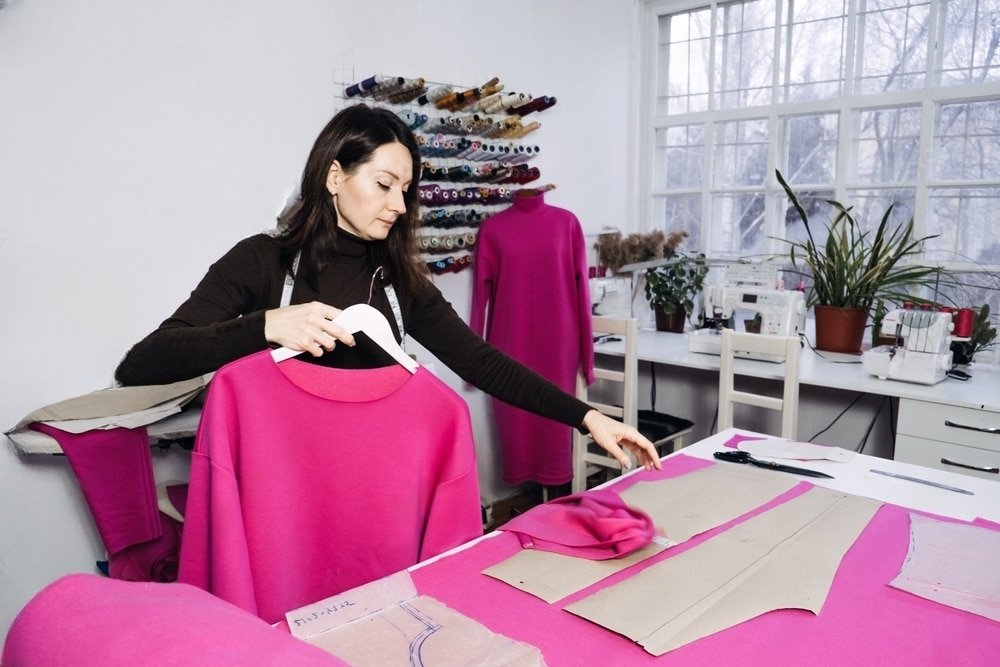In recent years, the fashion industry has undergone a transformative shift towards sustainability and ethical practices. One notable innovation that has gained traction is zero waste pattern making, a design approach that challenges traditional wasteful practices in pattern cutting and garment production. This article delves into the concept of zero waste pattern making, its historical roots, and the intricate pattern cutting process that underpins this sustainable design methodology.
What is Zero Waste Pattern Making?
Zero waste pattern making is a design philosophy rooted in minimizing fabric waste during the garment manufacturing process. The traditional approach to pattern cutting often results in substantial fabric remnants that are discarded, contributing to environmental degradation and resource depletion. In contrast, this type of pattern making aims to optimize fabric usage by creating patterns that utilize the entire fabric width, leaving no scraps behind.
History and Evolution
The origins of zero waste pattern making can be traced back to the mid-20th century when Japanese designer Issey Miyake introduced his revolutionary A-POC (A Piece of Cloth) concept in the 1980s. This concept involved creating garments from a single piece of fabric without any cutting, thus eliminating fabric waste. Miyake’s innovative approach challenged the prevailing norms of the fashion industry, setting the stage for further exploration of zero-waste design methods.
As the fashion industry grappled with the consequences of its wasteful practices, designers and researchers began to explore ways to reduce the environmental impact of clothing production. Pioneers like Julian Roberts, Holly McQuillan, and Timo Rissanen contributed to the development of no waste pattern making techniques. Their work focused on manipulating fabric folds, pleats, and strategic seam placements to create garments that fit the body without generating waste.
Pattern Cutting Process
The process of zero waste pattern making is a delicate balance between design creativity, mathematical precision, and an acute understanding of fabric behavior. Unlike traditional pattern cutting, which often involves cutting shapes directly from flat fabric, zero waste pattern making requires a thorough understanding of how to manipulate fabric folds and angles to create three-dimensional forms.
Design Concept: The process begins with conceptualizing a design that aligns with the principles of zero waste. Designers must envision how fabric folds, darts, and seams can be strategically positioned to achieve the desired garment silhouette while minimizing waste.
Prototyping and Experimentation: Experimentation is at the heart of zero waste pattern making. Designers create prototypes to test how fabric manipulation techniques influence the overall design. This stage often involves trial and error to achieve the perfect balance between aesthetics, fit, and waste reduction.
Fabric Manipulation: The actual pattern cutting process involves intricate fabric manipulation techniques, such as origami-inspired folds, tucks, and twists. These techniques not only add visual interest to the garment but also allow designers to create complex shapes without the need for excessive cutting.
Precision and Accuracy: This type of pattern making demands precision in measurements and calculations. Designers must calculate the fabric’s natural stretch, drape, and grain to ensure that the manipulated fabric behaves as intended.
Sustainable Material Selection: Beyond pattern cutting, sustainable material choices play a crucial role in the zero waste approach. Designers often opt for organic, recycled, or upcycled materials to further minimize the environmental impact of their creations.
Challenges and Opportunities
While zero waste pattern making offers a promising solution to the fashion industry’s sustainability challenges, it is not without its obstacles. One of the primary challenges is the complex balance between aesthetics, functionality, and waste reduction. Achieving a visually appealing garment while adhering to zero waste principles requires a high level of skill and creativity.
Additionally, zero waste pattern making may present challenges in mass production due to the intricacies involved in fabric manipulation and the potential for variations in the final product. However, advancements in technology, such as digital pattern making and 3D modeling, are making it increasingly feasible to scale up the production of zero waste garments.
The Future of Zero Waste Pattern Making
As the fashion industry continues to evolve, the future of zero waste pattern making looks promising. Designers, educators, and fashion houses are recognizing the value of integrating sustainability into their practices. The concept has gained widespread attention, prompting collaborations between traditional artisans, technologists, and sustainability advocates.
Fashion schools and institutions are incorporating zero waste design principles into their curricula, nurturing a new generation of designers who are well-versed in sustainable practices. Furthermore, consumers are becoming more conscious of their fashion choices, demanding transparency and accountability from brands, which is pushing the industry towards adopting more responsible methods.
Zero waste pattern making represents a pivotal shift in the fashion industry’s approach to design and production. By challenging conventional methods and embracing innovative techniques, designers are working towards a more sustainable future. The journey from the historical roots of zero waste design to the intricate pattern cutting process showcases the creativity and commitment required to transform the industry. As the world embraces sustainable fashion, this type of pattern making stands as a beacon of hope, proving that style and sustainability can coexist harmoniously on the runway and in our wardrobes.
So, are you looking for an expert to reduce your wastage to make pattern? We’ll recommend Beautiful Connection Group from the USA. They offer a wide range of dress types, including tops, t-shirts, leggings, skirts, and more. This manufacturer is particularly advantageous for new clothing business owners since they do not impose high minimum purchase amounts; their minimum purchase amount is only 50. The company provides the flexibility to customize any dress design and choose any fabric. However, please check their website for more detail.

